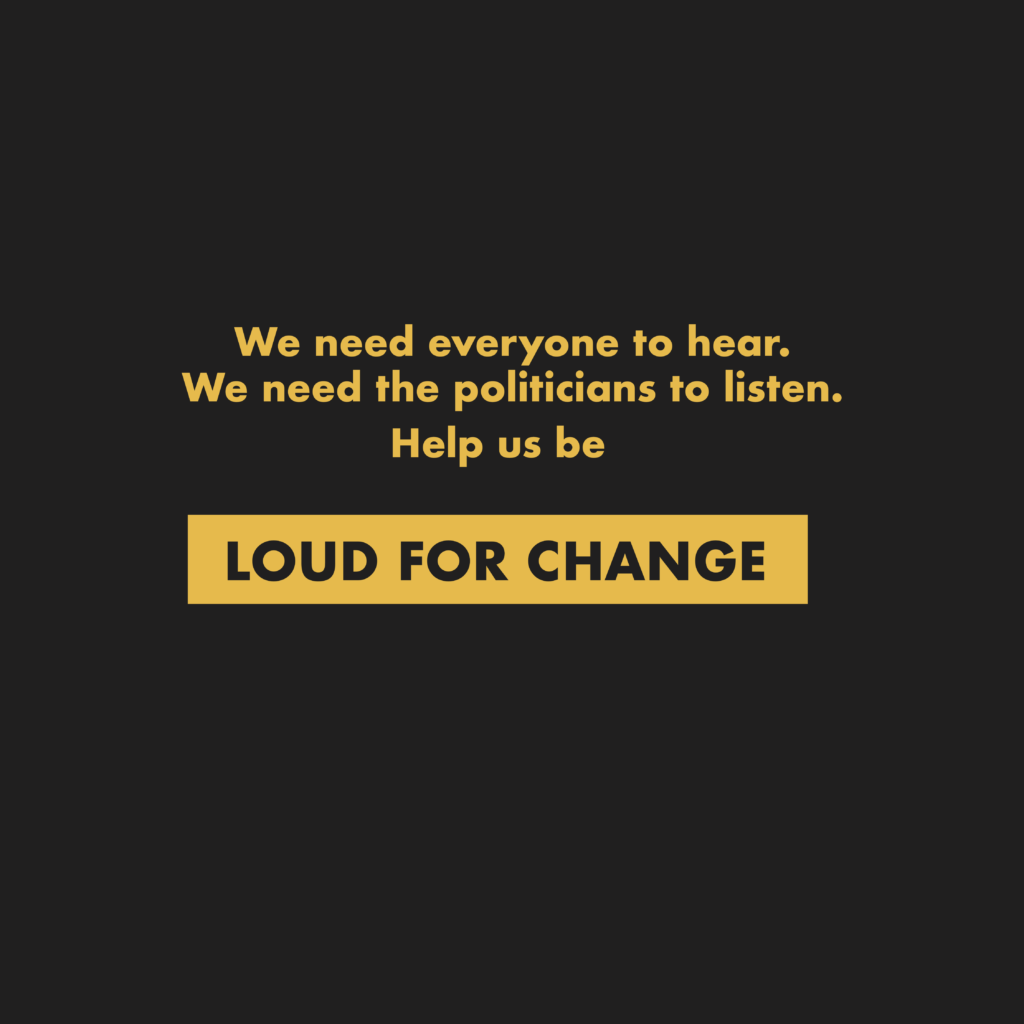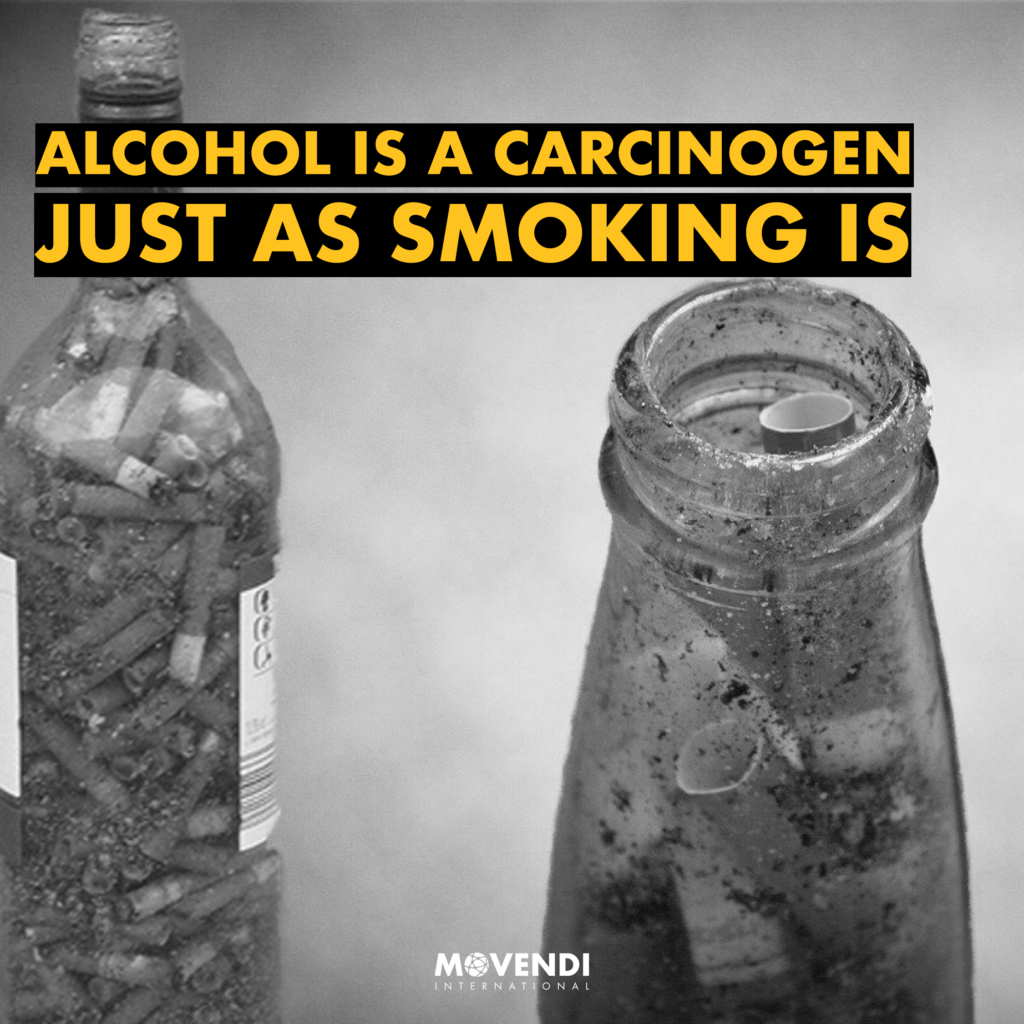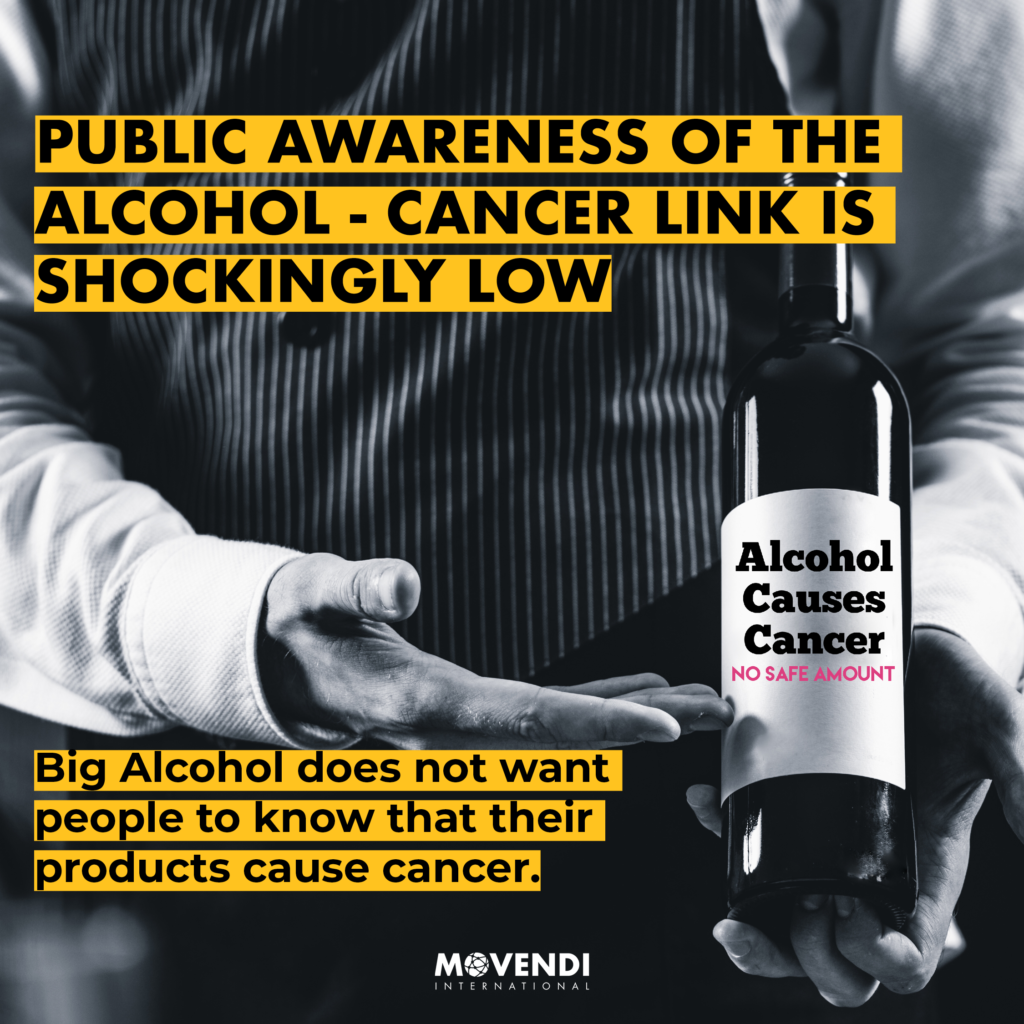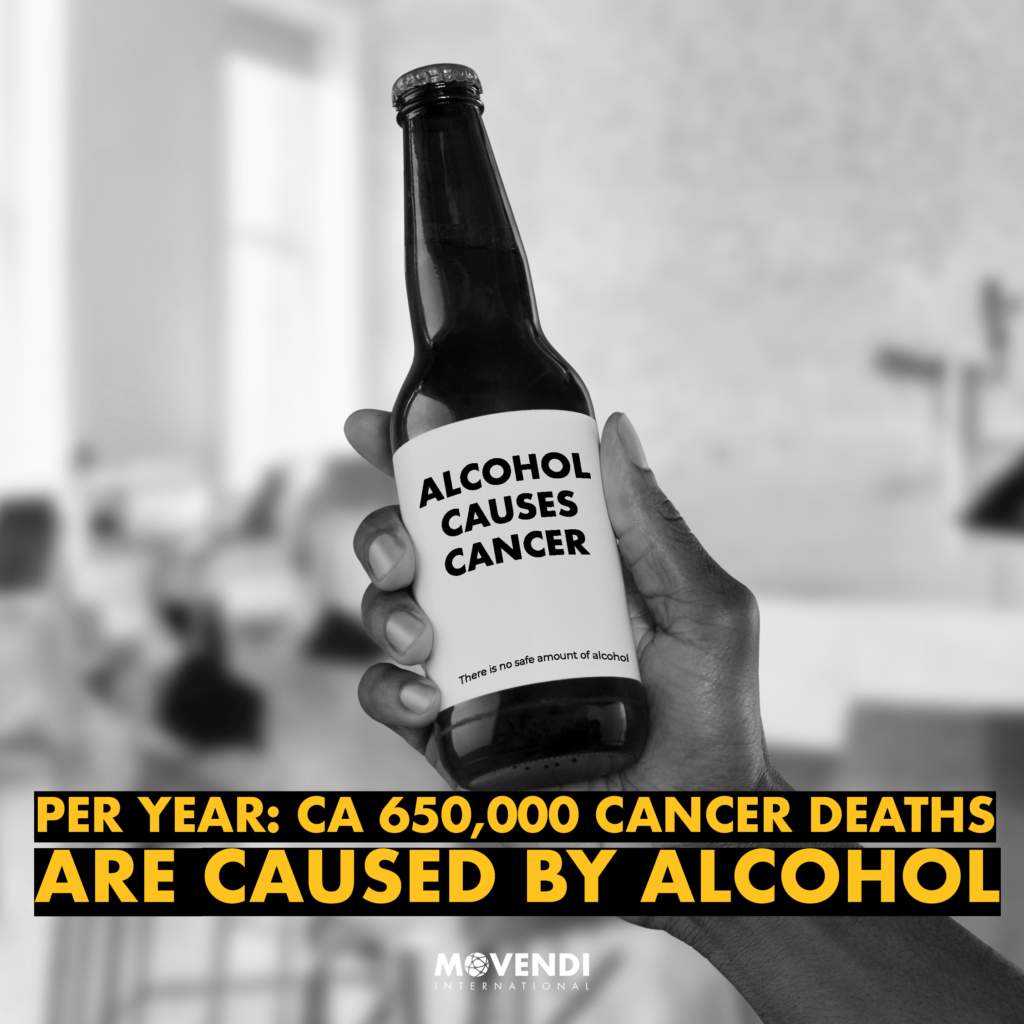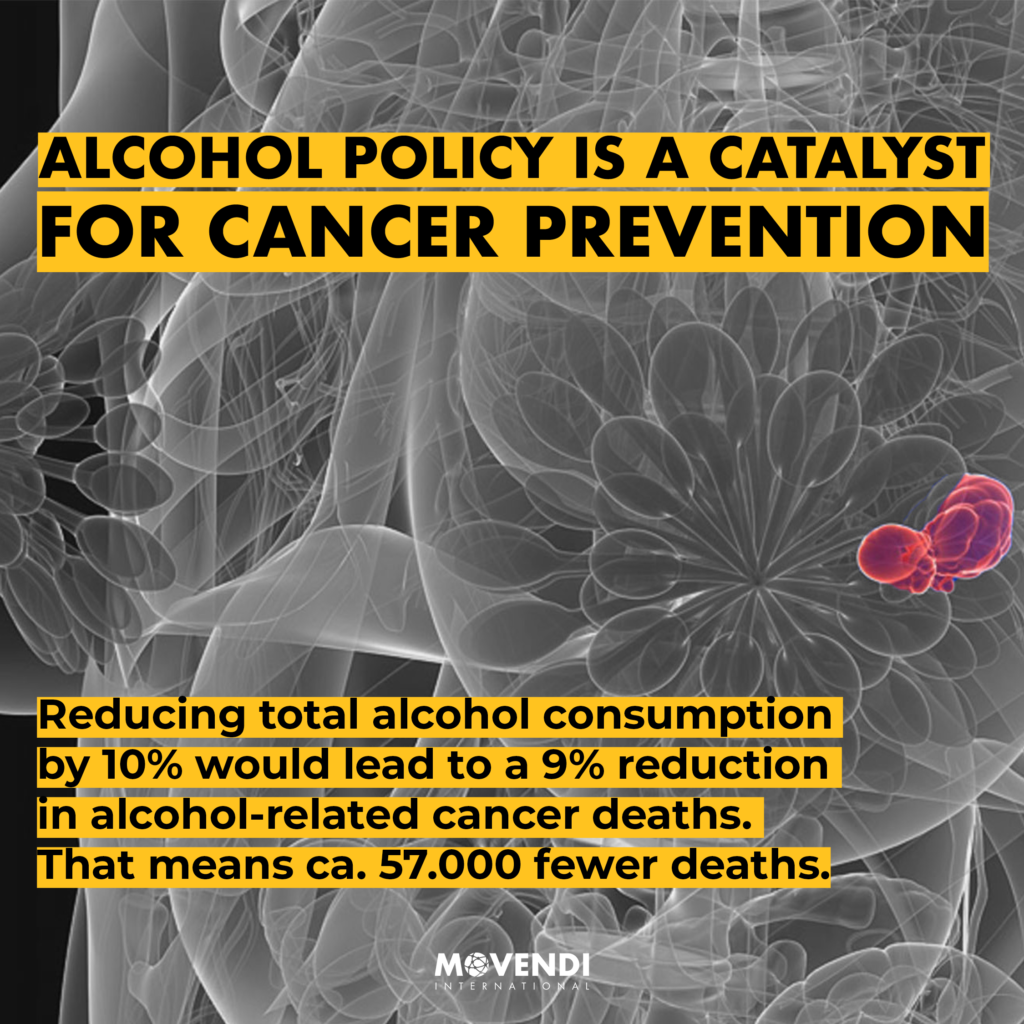he products of the alcohol industry are causing cancer. But people do not know that alcohol causes cancer. Too many lives are lost to cancer caused by alcohol. This could be prevented by proven alcohol policy solutions.
This year we are going to change all that. This year we are going to be loud for change.
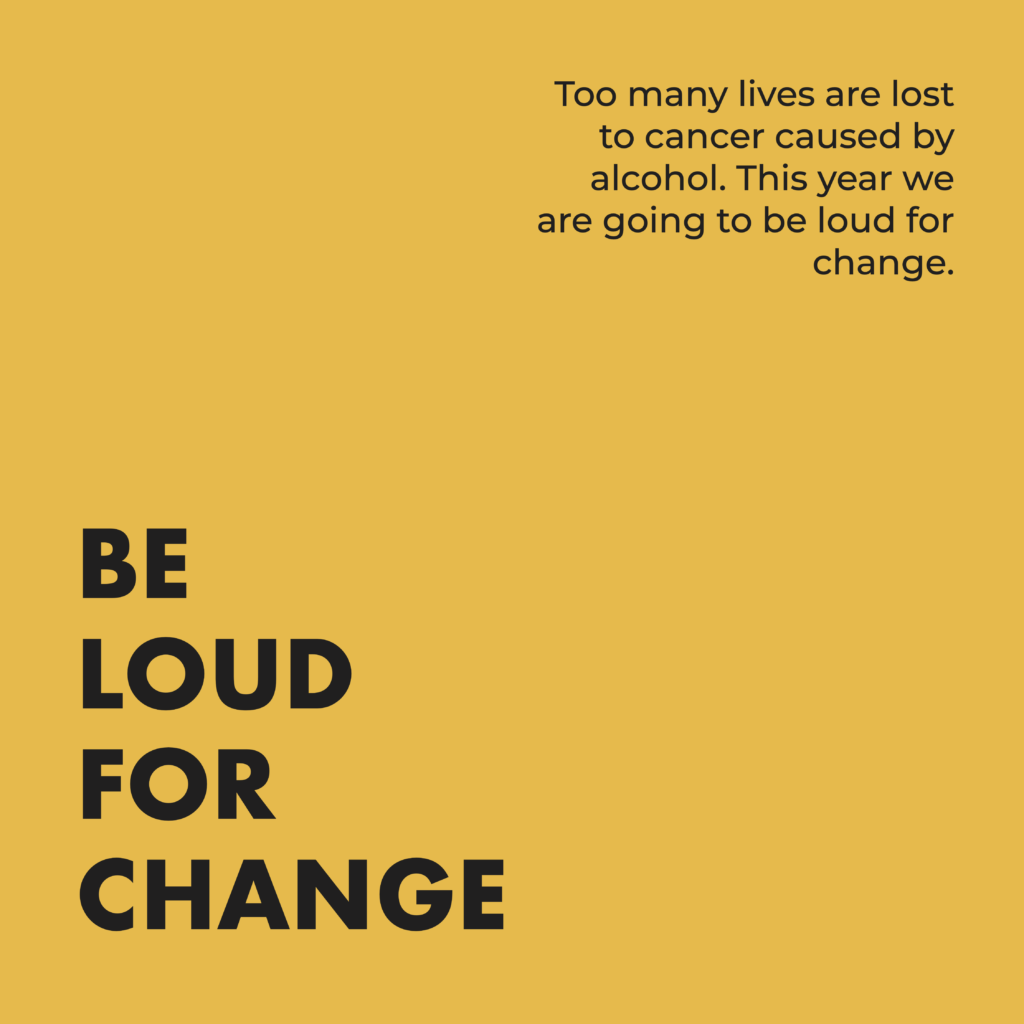
Alcohol causes 7 types of cancer:
- mouth,
- throat (pharynx),
- food pipe (esophagus),
- voice box (larynx),
- breast (in women),
- bowel (colon and rectum), and
- liver cancer.
Alcohol probably also increases the risk of cancer of the stomach, and might affect the risk of some other cancers as well.
For each of these cancers, the more alcohol a person consumes, the higher is their cancer risk. There is no safe or healthy amount of alcohol consumption, regarding cancer risk.
A large part of the alcohol-related cancer burden originates from light to moderate alcohol consumption, especially among women.
For example, in Germany the two most frequent cancers are breast cancer and colorectal cancer.
- More than 20% of the alcohol-attributable cancer cases in these categories are seen in women who consume less than two alcoholic drinks a day.
- For men, 8% of all alcohol-attributable colorectal cancer cases fall into these low-dose alcohol use categories.
Science knows about the link between cancer and alcohol use since the 1980s.
The International Agency for Research in Cancer (IARC), the WHO’s research body, classified alcohol as class one carcinogen in 1988. The IARC working group writes:
There is sufficient evidence in humans for the carcinogenicity of alcohol consumption.
Alcohol consumption causes cancers of the oral cavity, pharynx, larynx, oesophagus, colorectum, liver (hepatocellular carcinoma) and female breast.”
Personal Habits and Indoor Combustions, IARC Monographs on the Evaluation of Carcinogenic Risks to Humans Volume 100E (2012)
